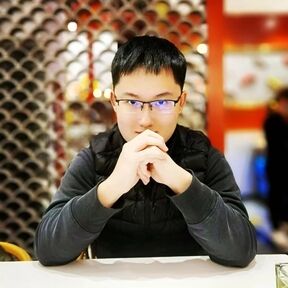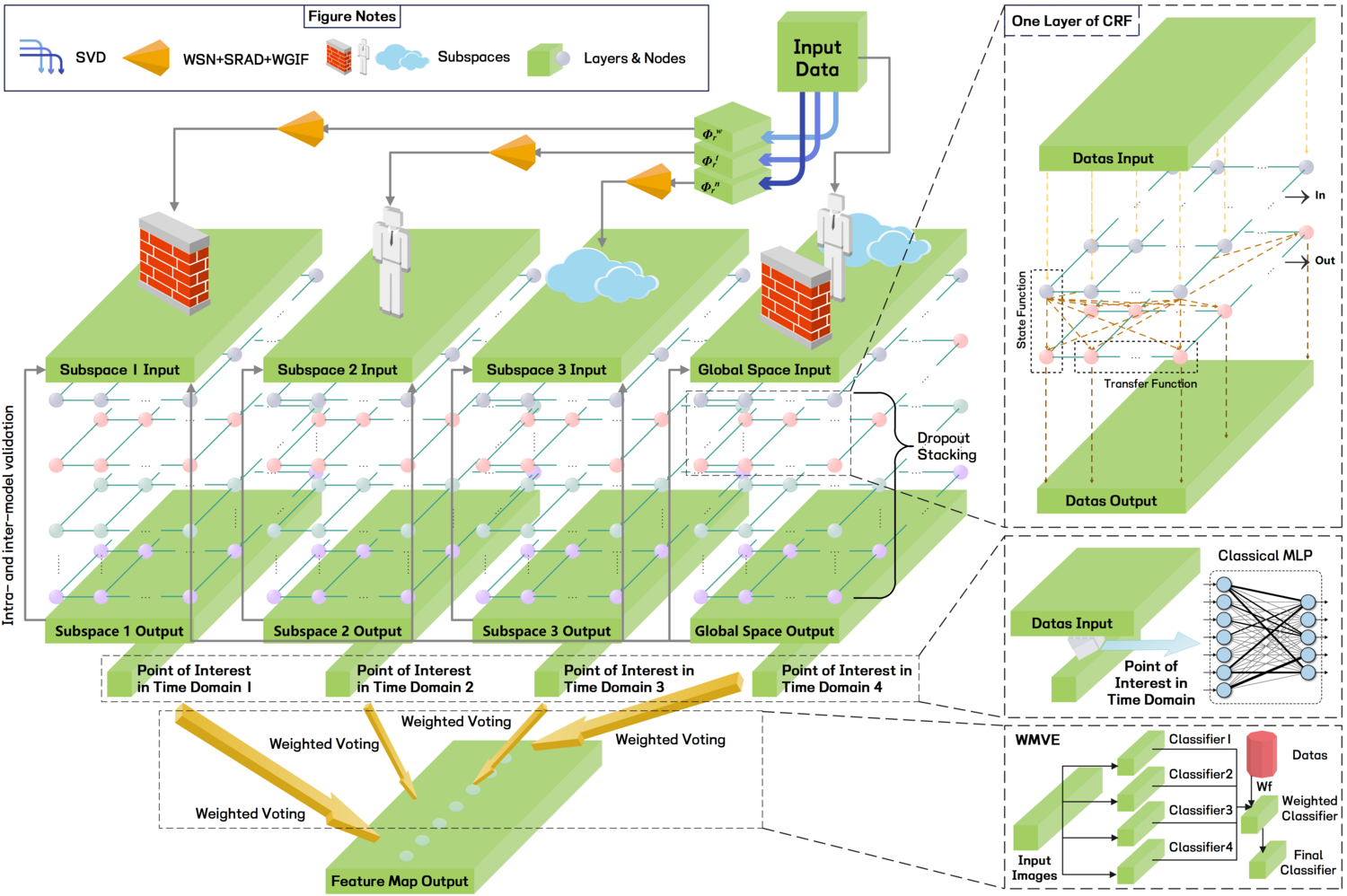W. C. Gao Research
Official website for publishing open-source research results, codes and projects.
Indoor Human Behavior Recognition Method Based on Wavelet Scattering Network and Conditional Random Field Model
Files Link:
Google Drive: https://drive.google.com/file/d/1zwroyBmJGQMtmXYam....
Baidu Cloud: https://pan.baidu.com/s/1nT91LLYwgM6Ld-Xhbh4pcQ?pw....
Extraction Code If Needed: maa3.
Abstract:
Ultra-wideband (UWB) through-the-wall radar (TWR) can be utilized for indoor human behavior recognition via micro-Doppler information. However, faced with weak micro Doppler features and low accuracy, conventional recognition method does not perform well in shielded environment. To address these problems, this paper proposes an indoor human behavior recognition method based on wavelet scattering net work and conditional random field model (TWR-WSN-CRF). In the proposed method, wavelet scattering network, speckle reducing anisotropic diffution (SRAD) with weighted guided image filter (WGIF) are employed for feature enhancement and noise suppression, and the signal-to-noise ratio (SNR) is improved. Then, human behavior recognition network based on conditional random field model is developed to extract global and local features from wall, target, noise subspace obtained by singular value decomposition. Finally, multi-layer perceptron (MLP) model and weighted majority voting (WMVE) method are used for fusion decision. The effectiveness of the proposed method is verified by experiment. The results show that compared with other methods, the proposed human behavior recognition method achieves highest recognition accuracy with 96.25% on the validation data set.
Research & Code:
Weicheng Gao.
Mentors & Co-workers:
Xiaodong Qu, Haoyu Meng, Yi Zhao, Xiaopeng Yang.
Publication:
IEEE Transactions on Geoscience and Remote Sensing.
Project Includes:
1. Signal preprocessing / Data preprocessing codes.
2. WSN\SRAD\WGIF codes.
3. CRF image feature labeling codes.
4. MLP codes with voting decition.
5. Source files for images in the paper.
Environment:
Matlab R2022a+.
Papers Involving This Work:
[1] Xiaodong Qu, Weicheng Gao, Haoyu Meng, Yi Zhao, Xiaopeng Yang, “Indoor Human Behavior Recognition Method Based on Wavelet Scattering Network and Conditional Random Field Model,” in IEEE Transactions on Geoscience and Remote Sensing, 2023.
[2] 高炜程,杨小鹏,渠晓东,兰天,龚俊波,“多链路全连接条件随机场的穿墙雷达人体行为识别方法”,计算机工程与应用,专刊,2022.
Why We Do This?
Ultra wideband (UWB) through wall radar (TWR) can detect human targets behind strong bodies by using the penetration characteristics of low-frequency electromagnetic waves, and is widely used in urban operations, anti-terrorism conflicts, disaster rescue, criminal investigation, search and rescue and other fields. In these application fields, human motion recognition is one of the most challenging topics in moving target recognition through walls. Because of the influence of the wall, such as attenuation, refraction and multipath effects, it will bring obvious distortion to the echo signal of the ultra wideband through wall radar, resulting in a significant decline in the accuracy of human motion recognition, a significant increase in the calculation cost of available models, and a very challenging system deployment. This forces us to develop algorithms with faster convergence speed and higher reliability, while the accuracy can still be maintained at a higher level under the same background conditions.
We built this site to record and present our work more visually, and to provide peers with links to Google Drive, Baidu Cloud and Github for some of our open source work at the same time. Since some of our core work is a team effort, it is not open-source permitted. Work done by me personally and not involving a conflict of interest will be open to download links. Hope more peers can join the open source cooperation!
About Us

Weicheng Gao
Dr. from BIT
My name is Weicheng Gao. I'm a student member and young professional member of IEEE, studying under professor Xiaopeng Yang. He is currently a PhD student at the Radar Research Lab, Beijing Institute of Technology. He is a selected member of the CCSA Talent Program. He is currently a student advisor of the Radar Club of Beijing Institute of Technology and a peer tutor of the Physics Foundation Class. His research interests are mainly focused on through-the-wall radar indoor human motion, gait and micro-motion high-precision intelligent recognition methods.
